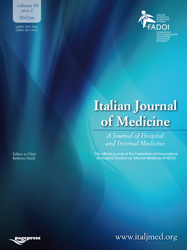Predictive value of Frank’s sign for obstructive coronary artery disease confirmed by coronary computed tomography angiography
All claims expressed in this article are solely those of the authors and do not necessarily represent those of their affiliated organizations, or those of the publisher, the editors and the reviewers. Any product that may be evaluated in this article or claim that may be made by its manufacturer is not guaranteed or endorsed by the publisher.
Authors
Numerous studies have suggested a link between Frank’s sign and coronary artery disease (CAD); however, there is limited data available from Southeast Asia, and no previous studies have been conducted in Vietnam to evaluate this association. This cross-sectional study examined 124 consecutive Vietnamese individuals who underwent coronary computed tomography angiography at our center. Differences in patient characteristics and the association between Frank’s sign and CAD were analyzed using Chi-square and t-tests. Multivariate regression was performed to adjust for confounding variables, and receiver operating characteristic curve analysis was utilized to evaluate the predictive accuracy of Frank’s sign for CAD. In this study, 124 patients with a mean age of 58.5±12.4 years, predominantly male, were included. Frank’s sign was present in 84% of the participants. Among these, males and older individuals had significantly higher rates compared to those without the sign. Obstructive CAD was observed in 48 patients (38.7%). The prevalence of obstructive CAD was significantly higher in those with Frank’s sign (52.5%) compared to those without it (13.6%), with p<0.001. Multivariate analysis identified Frank’s sign [odds ratio (OR) 3.79; 95% confidence interval (CI) 1.33-10.82] and age (OR 1.06; 95% CI 1.01-1.10) as independent risk factors for CAD. Frank’s sign demonstrated an area under the curve of 0.69, with 88% sensitivity and 50% specificity in predicting CAD. This study highlights a significant association between Frank’s sign and CAD, independent of established risk factors, in a Vietnamese population.
How to Cite

This work is licensed under a Creative Commons Attribution-NonCommercial 4.0 International License.
PAGEPress has chosen to apply the Creative Commons Attribution NonCommercial 4.0 International License (CC BY-NC 4.0) to all manuscripts to be published.






